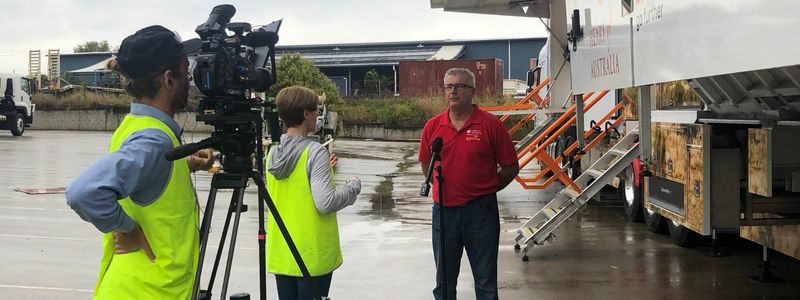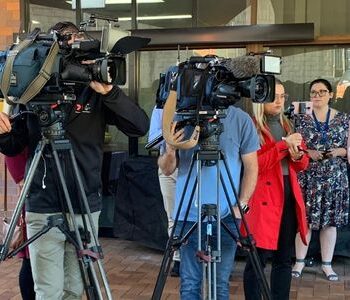How to do a TV interview
Being asked to do a television interview can be daunting and nerve racking, particularly if it’s your first time talking to a journalist.
And unless you’ve completed media training, there are a number of things you should know before you say yes.
So, how do you do a TV interview? For example, how do you stand, where do you look, what do you say, and how do you respond to those tricky questions that you don’t really want to answer.

4 top things to make a TV interview successful
1. Get there on time.
Firstly, be available, and if you agree to do a TV interview, be there on time (even better, arrive early). Not only will TV producers breathe a sigh of relief that you’re where you’re meant to be, being on time gives you the chance to relax and run through your key messages and talking points.
If you are travelling to your interview, think about how long it takes to get there and then take in account time for traffic and other variables that could go wrong. If you’re late, you’ll likely lose your interview opportunity and journalists won’t be inclined to call you again.
2. Dress accordingly for the TV interview
There is no “dress code” as such for TV, but there are some basic things to keep in mind when doing a TV interview. Here are some tips to follow:
- Go for block colours and avoid patterns – clothes that are too busy can be distracting. Fine lines and small dots can strobe on camera so best to go with a single colour.
- Leave the chunky jewellery at home – it can be distracting for viewers and items like bangles can create noise.
- Consider a waistband – might seem like an odd one but when a lapel microphone is used, the battery pack most often needs to be clipped on to a waistband so a top with skirt or pants is an easy place to do that.
- A neat jacket is a great choice for both men and women.
- For men, a white or pale blue business shirt works best under a suit jacket.
3. Keep it simple and lively
Most TV interviews run for only a few minutes, so delivering your messages in concise answers is key. Think of your audience – are you talking to a business audience who knows your industry, or is it mainstream TV and you’re chatting to everyday mums and dads at home. Consider who is watching and use language appropriate to them.
4. Undergo media training
Media training is the best way to be prepared for all aspects of a TV interview. Practical and realistic interview scenarios in front of a full-sized TV news camera are used to refine your presentation skills, familiarise you with where to look and how to stand, and determine your key messages.
There are several types of TV interview, including a one-on-one interview, a media conference, and a live cross.
Our media trainers, led by Founder and Managing Director, Leisa Goddard, are former senior TV journalists, producers, and news bosses who have decades of newsroom experience.
During the past three decades, they have conducted thousands of television interviews to report on just about everything from terrorist bombings to Presidential inaugurations and scandals, from Federal Elections and Budgets to the Academy Awards in Hollywood.
If your team would like to learn the vital interview skills needed to be confident and effective spokespeople, contact us.


